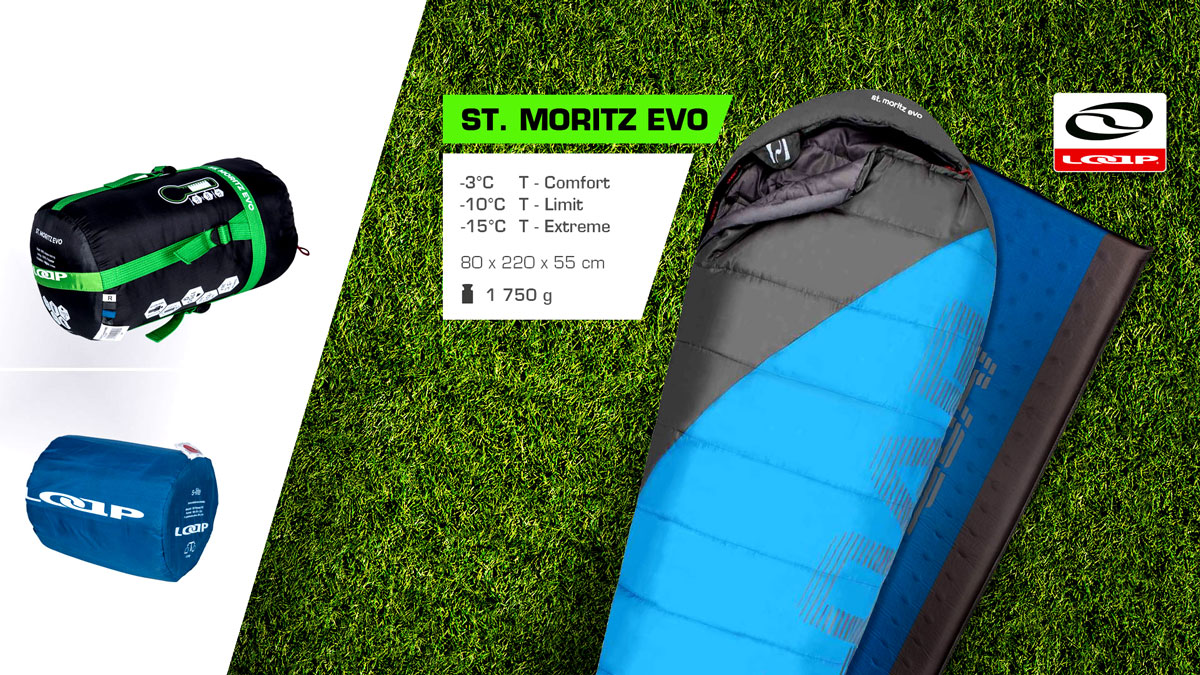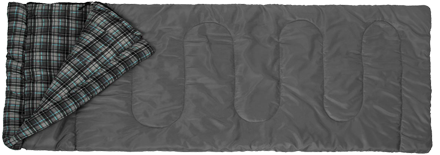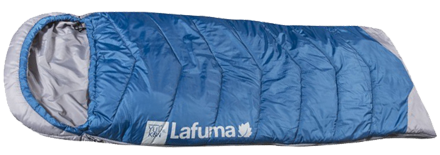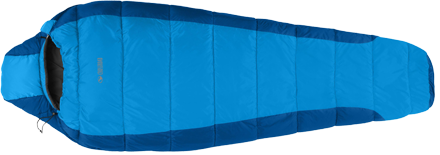How to Choose a Sleeping Bag
Crawling into a sleeping bag that you know is going to be warm and comfortable is one of the singular pleasures of any camping adventure. Just as a good sleeping bag can make for a good night's sleep, an ill-suited one can spell discomfort or worse.
Criteria for choosing the right sleeping bag
- temperature
- weight
- price
If you're looking for a small lightweight and affordable sleeping bag, it presumably won't be suitable for colder nights. If you plan to sleep outside in temperatures around zero, the sleeping bag will grow both on its size and price.
Basic questions to ask yourself
- Sleeping inside? - If you will sleep inside a building, you can use a simple rectangular sleeping bag made of absorbing materials such as cotton or flannel.
- Sleeping outside? - Suitable mummy type sleeping bag made of water-resistant materials. Make sure to choose according to the temperatures in your destination.
- Transported in a car? - Weight is not so important, so you can choose a more comfortable and spacious model.
- Transported in a backpack? - Lower weight and dimensions are essential. Sleeping bag should be packable into small dimensions, mummy type is recommended.
- Travelling on a bike? - Weight should be as low as possible - under 1,2 kg.
- Who will use it? - Sleeping bags for women and children should have suitable thermal comfort, men can choose according to the temperature limit.

Shape
- rectangular - suitable for warm weather, although inexpensive and roomy, they let a lot of body heat escape and are heavy and bulky
- mummy - designed to save weight and maximize heat retention, perfect head protection
- barrel - wider mummy sleeping bags with an extra room for those who don't want to feel constricted
- anatomical mummy - copies the shape of the body to achieve as lowest weight and as best thermal insulation as possible for the price of comfort
Temperature Ratings
Temperature rating is the most important parameter of a sleeping bag, signifying its thermal insulating properties. Usually you can come across three or four indicators:
- maximum temperature - indicates at what temperature we start to feel uncomfortably warm. This problem can be often easily solved by unzipping the sleeping bag.
- thermal comfort - average temperature at which the user lies comfortably on his or her back without feeling cold
- temperature limit - lowest temperature at which the user can sleep without feeling cold
- extreme temperature - temperature at which the user is in danger of hypothermia
Below 0°C

Sleeping bags with thermal comfort below 0°C are specially designed for use in conditions with low temperatures. They are suitable for the winter.
Between 0 - 9°C

Sleeping bags suitable for use from early spring to late autumn. They provide thermal comfort from 0°C to 9°C. They are a good choice for camping or spending the night in the mountains.
Above 9°C

Sleeping bags with thermal comfort above 9°C have a reduced weight and a thinner layer of thermal insulation. They are suitable for summer nights and for nights spent in the hut.
There are three ways how the manufacturers measure these values:
- calculations - least precise method
- measuring temperature resistance
- testing according to EN 13537 - very expensive method of measuring which is done only at several laboratories in the world, sleeping bags are tested with a figurine

Sizes
Choosing the right size of a sleeping bag is more important than you might think. If the sleeping bag is too big, the body won't produce enough heat to warm the air within the sleeping bag, which is needlessly heavier than necessary. Smaller models, on the other hand, may be too tight and very uncomfortable.
Materials
- Outer fabrics are a compromise betweed firmness, weight, water resistance and breathability. Polyamide with various water repellent treatments is the most common fabric.
- Inner fabrics should be not only breathable, but nice to touch. Cheeper models can contain cotton inner layer, which is comfortable, but unfortunately also quite heavy and voluminous. It also absorbs humidity and dries a long time.
- Polyester is the most used material in sleeping bags with similar properties like functional clothing.
Construction
Construction mainly means the amount of insulation filling. Synthetic insulations (like Primaloft, Climashield, and the plethora of proprietary insulations) are a safer choice if you often find yourself in wet conditions. Many people prefer down sleeping bags. And it’s not just the weight, a high quality down bag can be over a pound lighter than a synthetic with the same temperature rating–it’s the cosy factor.
Maintenance
Sleeping bags are usually machine-washable and should be washed according to the manufacturer's instructions on the label.
- unzip the sleeping bag after every use and let it air-dry
- when stained, use a tepid soap water
- use special detergents, avoid washing in hot water (only warm)
- after washing, let the water drain and let it dry. Down fill sleeping bags should be shaken from time to time.
- ideally store the sleeping bag hanging in a dry and dark place
- when packing, don't roll, but gently stuff the bag into the sack to avoid breaking the fibres



